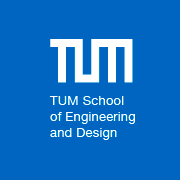Master Thesis - Munich, Deutschland - Technische Universität München
Beschreibung
Antigen recognition by T cells plays a crucial role in the adaptive immune system of vertebrates. Pathogen-derived peptides - so-called epitopes (recognizable parts of antigens) - are bound by the Major Histocompatibility Complex (MHC).On recognition of this joint peptide-MHC (pMHC) complex by the highly variable T cell receptors (TCRs), T cells are activated and initiate the adaptive immune response.
Determining TCR-epitope specificity from experimentally measured sequences in-silico can directly benefit the development of vaccines and personalized medicine [1].In previous studies, supervised machine learning methods have been developed in order to model either the epitope-MHC [2,3] or the epitope-TCR interaction [4-6] individually.
While high performance for predicting the TCR specificity has been hindered by the small variety of epitopes with known associated TCR, models can accurately predict the epitope-MHC interaction due to the vast availability of epitopes in the training data.
However, these two prediction tasks reflect two sides of the same coin:while parts of the epitope are bound by the MHC, the remaining parts are in contact with the TCR.
Therefore, we propose to jointly train deep learning classifiers for both interactions through multi-task and transfer learning.We assume that the diverse epitope MHC binding data will benefit the TCR predictors when a joint epitope encoder is learned.
Multi-task learning should ideally improve predictive power and therefore surpass current state-of-the-art performance.Goals:
Datasets:
- IEDB [7]
- VDJdb [8]
- McPas [9]
- NetMHCPan Benchmark [3]
Further Reading:
[1] Mösch, A., Raffegerst, S., Weis, M., Schendel, D., & Frishman, D Machine Learning for Cancer Immunotherapies Based on Epitope Recognition by T Cell Receptors. Frontiers in Genetics, 10, 1141.
[2] O'Donnell, T., Rubinsteyn, A., Laserson U MHCflurry 2.
0:
Improved Pan-Allele Prediction of MHC Class I-Presented Peptides by Incorporating Antigen Processing. Cell Systems,
[3] Reynisson, B., Alvarez, B., Paul, S., Peters, B., Nielsen, M NetMHCpan-4.1 and NetMHCIIpan-4.
0:
improved predictions of MHC antigen presentation by concurrent motif deconvolution and integration of MS MHC eluted ligand data. Nucleic Acids Research, 48, 449-W454.
[4] Jurtz, V., Jessen, L., Bentzen, A., Jespersen, M., Mahajan, S., Vita, R., Jensen, K., Marcatili, P., Hadrup, S., Peters, B.
, & Nielsen, M NetTCR:
sequence-based prediction of TCR binding to peptide-MHC complexes using convolutional neural networks. bioRxiv.
[5] Fischer, D., Wu, Y., Schubert, B., Theis, F Predicting antigen-specificity of single T-cells based on TCR CDR3 regions. bioRxiv.
[6] Springer, I., Besser, H., Tickotsky-Moskovitz, N., Dvorkin, S., & Louzoun, Y Prediction of Specific TCR-Peptide Binding From Large Dictionaries of TCR-Peptide Pairs. Frontiers in Immunology, 11, 1803.
[7] Fleri, W., Paul, S., Dhanda, S., Mahajan, S., Xu, X., Peters, B., & Sette, A The Immune Epitope Database and Analysis Resource in Epitope Discovery and Synthetic Vaccine Design. Frontiers in Immunology, 8, 278.
[8] Bagaev, D., Vroomans, R., Samir, J., Stervbo, U., Rius, C., Dolton, G., Greenshields-Watson, A., Attaf, M., Egorov, E., Zvyagin, I., Babel, N., Cole, D., Godkin, A., Sewell, A., Kesmir, C., Chudakov, D., Luciani, F.
, & Shugay, M VDJdb in 2019:
database extension, new analysis infrastructure and a T-cell receptor motif compendium. Nucleic Acids Research, 48(D1), D1057-D1062.
Mehr Jobs von Technische Universität München
-

Eine Mitarbeiterin
Bayern, Deutschland - vor 3 Tagen
-

Studentische Hilfskraft
Munich, Deutschland - vor 3 Wochen
-

Phd Position Available for Topology Optimization
Nuernberg, Deutschland - vor 3 Wochen
-

Studentische Hilfskräfte
Munich, Deutschland - vor 3 Wochen
-

Teamassistent/in (M/w/d) Mit Schwerpunkt
Munich, Deutschland - vor 1 Woche
-

Teamassistenz (F/m/d)
Nuernberg, Deutschland - vor 2 Wochen
